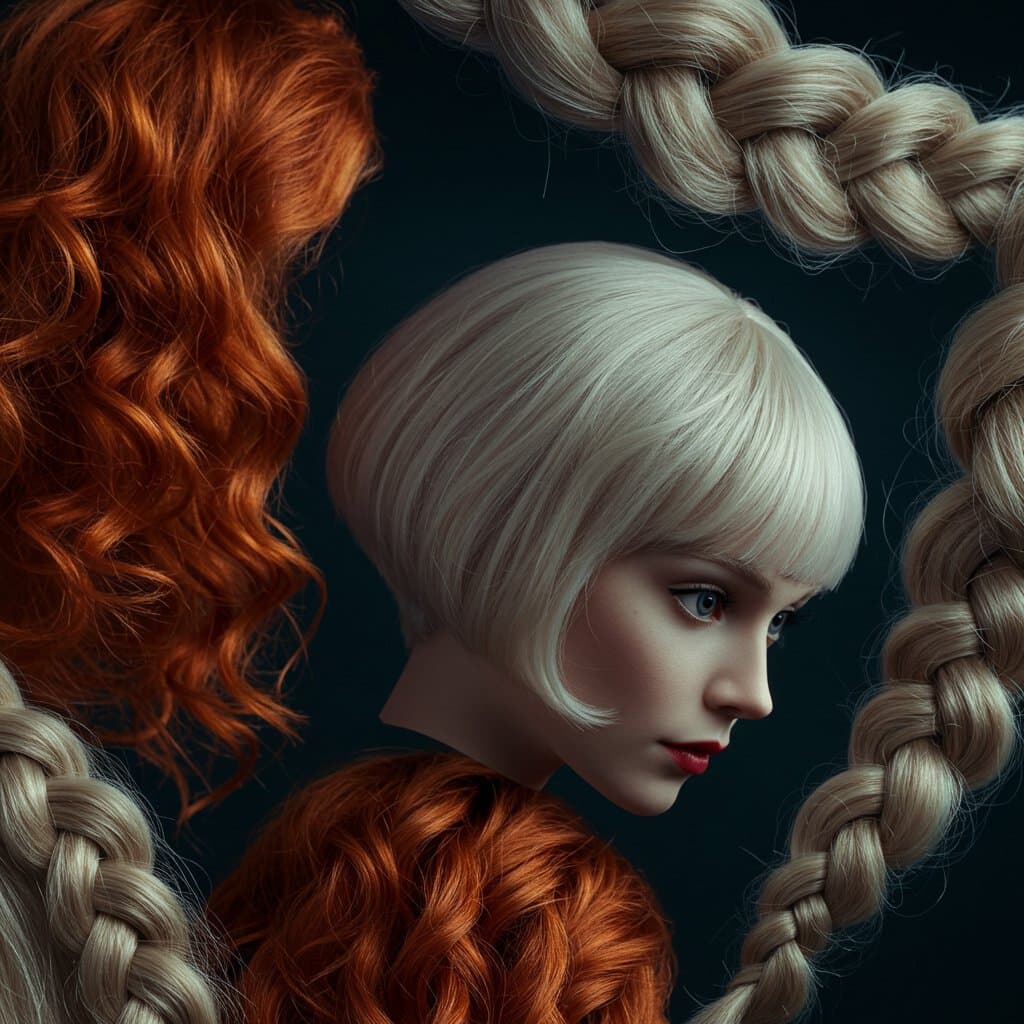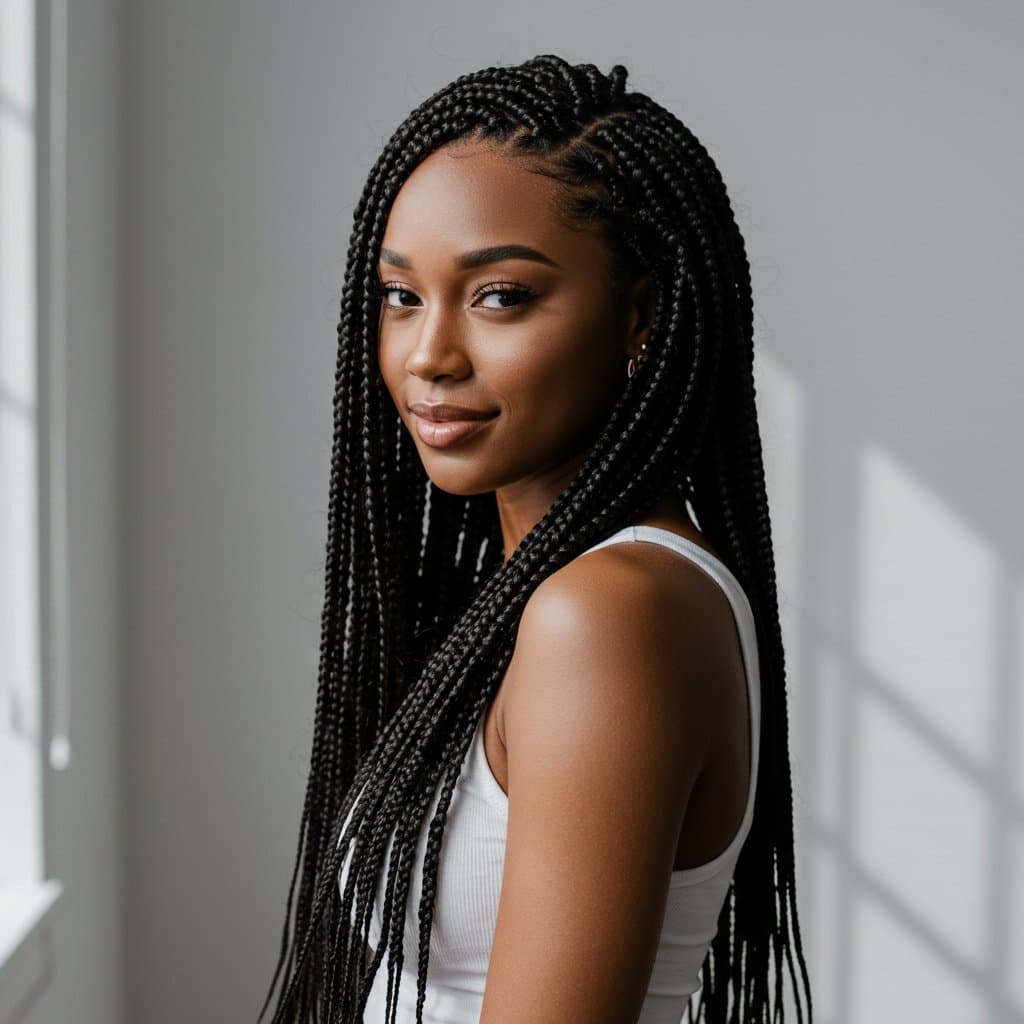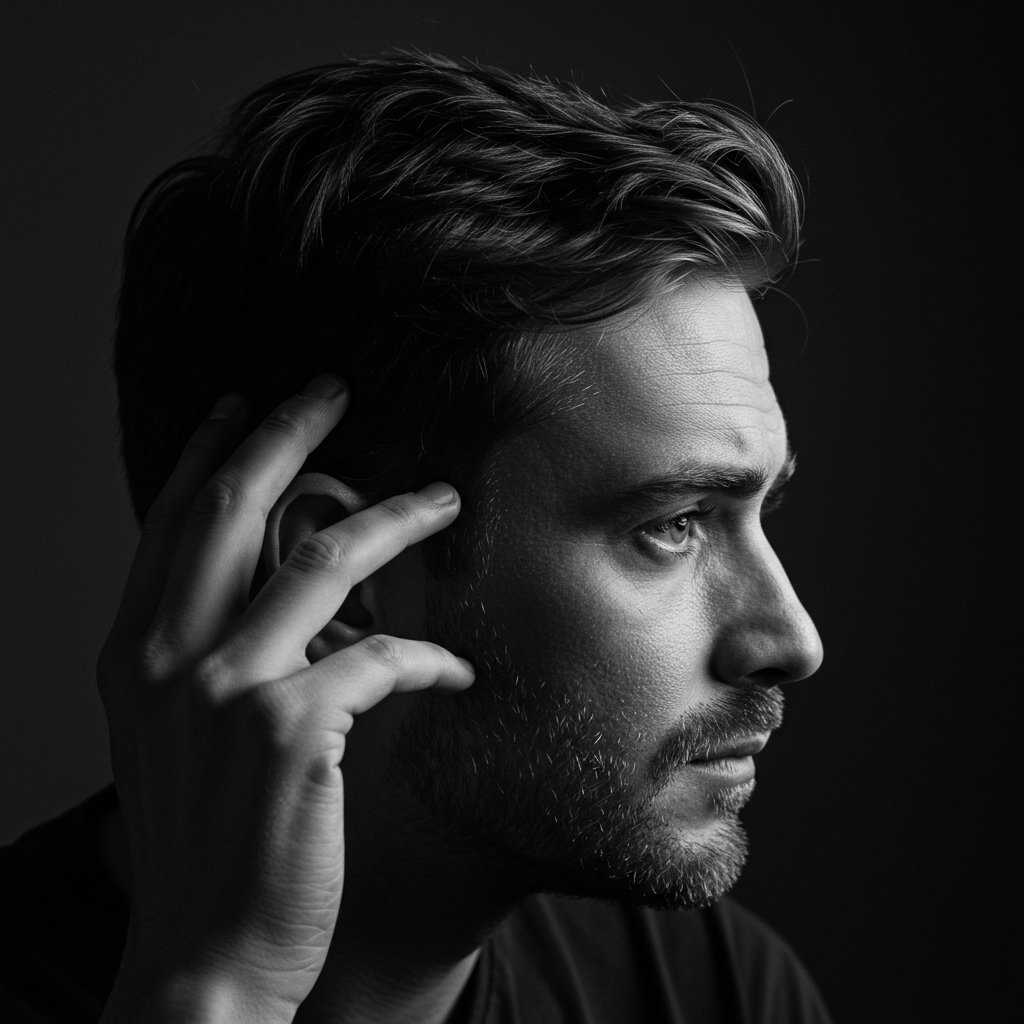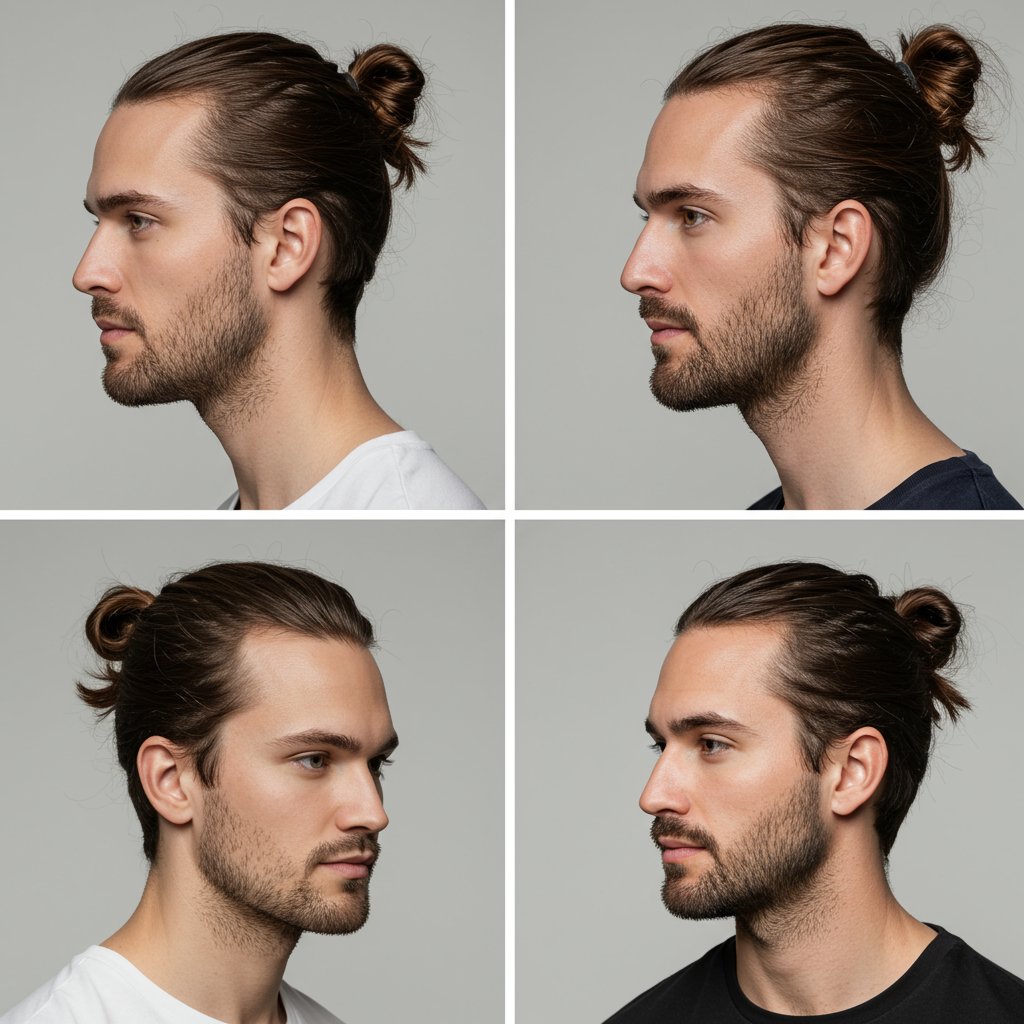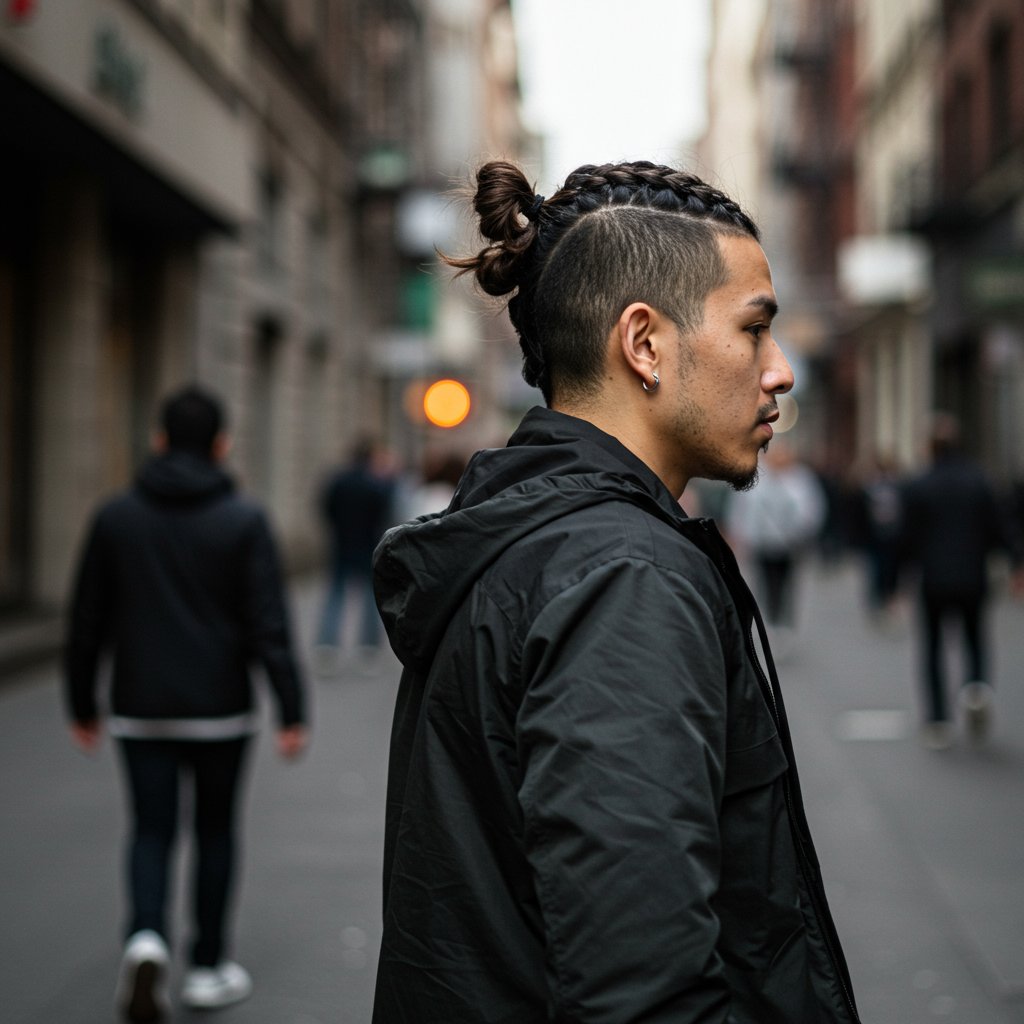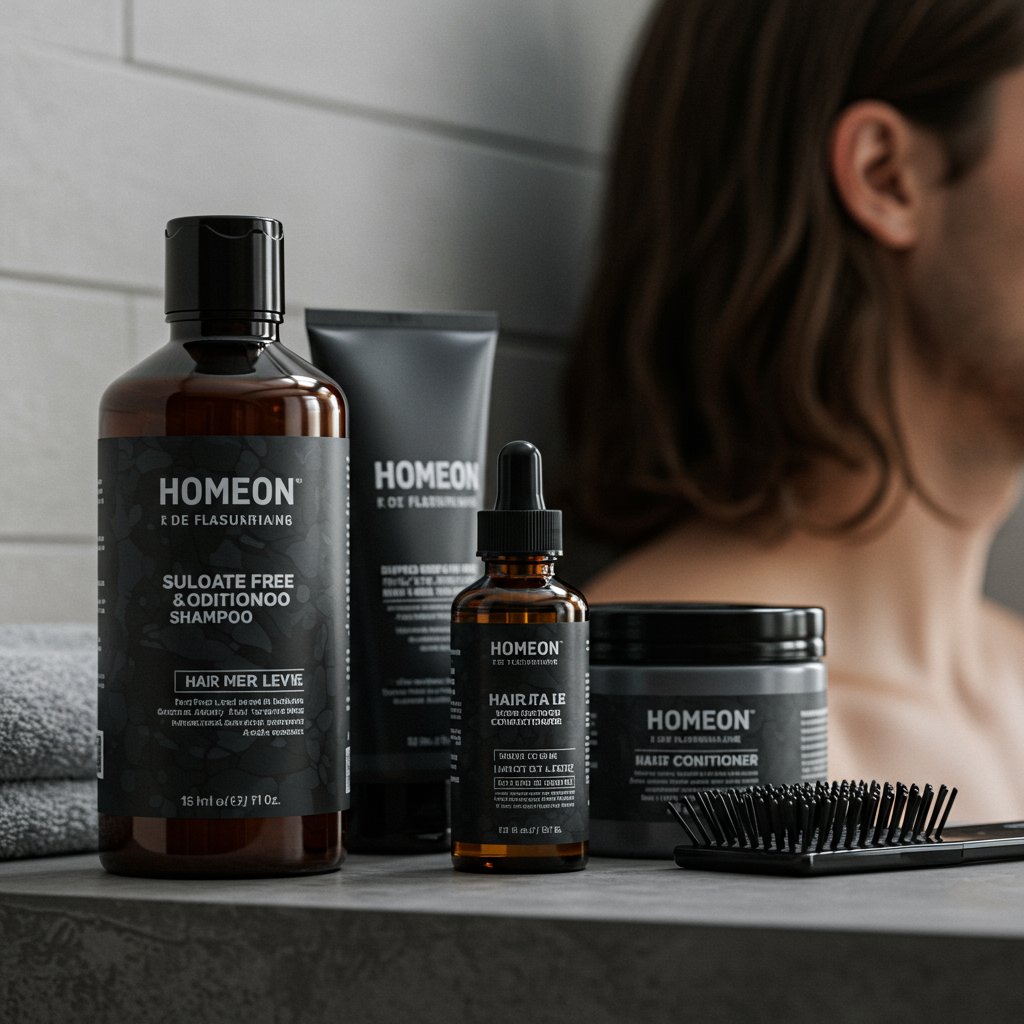The Resurgence of the Man Bun: A Modern Style Statement
The man bun and its close cousin, the top knot, have transcended trend status to become enduring staples in men's hairstyling. Once reserved for bohemian artists and off-duty warriors, these styles are now seen everywhere from boardrooms to coffee shops, sported by celebrities, athletes, and stylish men from all walks of life. Their popularity stems from a perfect blend of practicality and edge—they keep long hair managed while projecting an air of effortless confidence and modern masculinity. However, achieving the perfect man bun or top knot is more art than accident. There's a fine line between a look that's sharp and sophisticated and one that's sloppy or, worse, damaging to your hair.

This comprehensive guide is designed to navigate the nuances of these popular hairstyles. We will explore the critical dos and don'ts that every aspiring long-haired gentleman should know. From understanding the fundamental differences between the two styles to choosing the right variation for your face shape and implementing a hair care routine that supports healthy growth, we'll cover everything you need to wear your bun or knot with pride. Whether you're just starting your hair growth journey or are looking to refine your existing style, these expert insights will help you avoid common pitfalls and master the art of the modern man bun and top knot.
Man Bun vs. Top Knot: Understanding the Key Differences
While often used interchangeably, the man bun and the top knot are distinct styles, each with its own character and requirements. Knowing the difference is the first step toward choosing the look that's right for you and communicating effectively with a stylist. The primary distinction lies in how much of the hair is used and what's happening on the sides and back of the head.
The Classic Man Bun
The man bun involves gathering
all the hair on your head and securing it in a knot or loop, typically positioned at the crown or slightly lower on the back of the head. This style requires a uniform length all over, usually at least 6-8 inches, to ensure all strands can comfortably reach the tie point. It's a versatile look that can be worn sleek and neat for a professional setting or loose and messy for a casual, rugged vibe. The full man bun speaks to a commitment to long hair, offering a classic, grounded aesthetic.
The Modern Top Knot
The top knot, by contrast, is defined by its pairing with shorter sides. It uses only the long hair on the top section of the head, which is then tied into a knot. The back and sides are typically cut much shorter, often featuring a sharp undercut, a gradual fade, or a simple buzz cut. This creates a high-contrast, edgy look that is decidedly modern and bold. The top knot requires less overall hair length than a full man bun, but the contrast between the long top and short sides needs regular maintenance from a skilled stylist to keep the lines clean and intentional.
The "DOs": Essential Practices for a Flawless Style
Achieving an enviable man bun or top knot goes beyond simply tying your hair back. It requires attention to detail, proper technique, and a commitment to hair health. Following these essential "dos" will set you on the path to a style that looks intentional, healthy, and effortlessly cool.
DO Grow Your Hair to the Right Length
Patience is a virtue, especially when it comes to growing hair. For a full man bun, you need at least 6-8 inches of hair from the hairline to be able to pull it back without straining. For a top knot, the hair on top should be a similar length, but you can start rocking the style sooner as the sides are kept short. During the awkward in-between phase, use hats, headbands, or a small amount of styling product to keep hair out of your face. Resist the urge to tie it up prematurely, as this can cause breakage and a tiny, unflattering "nub."
DO Position it Correctly
Placement is everything. The ideal spot for most men is at the crown of the head or just below it. Tying it too high can look severe or like a ballerina bun, while tying it too low can look dated or unkempt. Experiment to see what complements your head shape. A good rule of thumb is to follow the line from your cheekbones to the back of your head—this usually points to the most flattering position.
DO Invest in Quality Hair Ties
Those standard rubber bands or thin, metal-clasped elastics are your hair's worst enemy. They snag, pull, and break delicate strands, leading to frizz and damage. Opt for thick, seamless fabric ties, spiral hair ties, or specially designed ties for long, thick hair. These provide a secure hold without creating a stress point that can lead to breakage. Never wrap the tie so tightly that it gives you a headache; a firm but gentle hold is sufficient.
The "DON'Ts": Common Mistakes to Avoid at All Costs
Just as important as knowing what to do is knowing what not to do. Many a potentially great man bun has been sabotaged by common mistakes. Avoiding these pitfalls will protect your hair's health and ensure your style remains on point.
DON'T Tie It Too Tight
This is the cardinal sin of man buns. Consistently pulling your hair back into a tight knot can lead to a condition called traction alopecia—gradual hair loss caused by constant tension on the hair follicles, particularly around the hairline. Your bun should be secure, not strangling. If you feel pulling or a headache, it's too tight. Vary your style by wearing your hair down some days to give your follicles a much-needed break.
DON'T Tie Up Wet Hair
Hair is at its most fragile and elastic when wet. Tying it up in this state stretches the strands to their breaking point. As the hair dries, it contracts and can snap against the tension of the hair tie. This leads to breakage, split ends, and a halo of frizz around your bun. Always let your hair air-dry at least 80% of the way or use a blow-dryer on a low heat setting before tying it up.
DON'T Neglect Your Scalp
A healthy bun grows from a healthy foundation. It's easy to forget about the scalp when your hair is always pulled back, but this can lead to product buildup, dandruff, and inflammation, which can inhibit healthy hair growth. Ensure you're thoroughly massaging your scalp when you shampoo to exfoliate and stimulate blood flow. A clarifying shampoo once a week or a scalp scrub can work wonders to keep it clean and balanced.
Face Shape Matters: Finding the Right Bun for You
Your face shape plays a significant role in determining the most flattering hairstyle. The man bun is no exception. By tailoring the placement and style of your bun, you can enhance your best features and create a more balanced, harmonious look.
For Oval and Rectangular Faces
If you have an oval or rectangular face, you're in luck—most styles will suit you. You can experiment with high or low placements. A classic bun positioned at the crown works perfectly. For longer faces, avoid placing the bun too high on top of your head, as this can elongate your face further. A mid-to-low bun will create better balance.
For Round and Square Faces
For men with round or square faces, the goal is to add height and create the illusion of a more angular or longer facial structure. A higher-placed man bun or top knot is your best bet. This draws the eye upward and adds vertical length. For square faces with a strong jawline, a slightly messier, less structured bun can soften your features, while a sharp top knot with a tight fade can accentuate your jawline for a more defined look.
For Heart and Diamond Faces
A fuller, lower bun is ideal for balancing a wider forehead and a narrower chin, characteristic of heart-shaped faces. This adds volume around the nape of the neck, creating a more symmetrical silhouette. Avoid overly tight or sleek styles that emphasize the width of your forehead. A looser, more relaxed bun positioned at the back of the head, rather than the top, is most flattering.
Styling Variations: From Casual to Formal
The man bun is not a one-size-fits-all style. Its versatility is one of its greatest strengths, allowing it to be adapted for any occasion, from a weekend hike to a black-tie event. Mastering a few variations will elevate your styling game.
The Messy Bun
This is the quintessential casual look. It's meant to look undone and effortless, but still requires some technique. After gathering your hair, pull it halfway through the elastic on the last loop to create a simple knot. Pull out a few face-framing strands to soften the look. A texturizing spray or sea salt spray applied beforehand will give your hair the grit and volume needed for that perfect, artfully disheveled finish.
The Polished, Sleek Bun
For formal occasions or a sharp professional look, the sleek bun is the way to go. Start with slightly damp or dry hair and apply a small amount of pomade, cream, or light-hold gel. Use a comb or brush to smooth all the hair back, eliminating any bumps or flyaways. Secure it tightly (but not painfully) into a neat coil or a folded loop. This style pairs exceptionally well with a sharp suit or formal wear.
The Half-Up Bun
The half-up style is a great option for the awkward growing-out phase or for those who want to keep hair out of their face while still showing off their length. Simply section off the top half of your hair—from your temples back—and secure it into a small bun or knot at the crown. The rest of your hair is left to flow freely. It's a relaxed yet stylish look that works well for a variety of settings.
The Foundation of a Great Bun: Hair Care and Maintenance
A truly great man bun isn't just about styling; it's a testament to healthy, well-cared-for hair. Long hair requires a different approach than short hair, with a focus on moisture, gentle handling, and scalp health.
Washing and Conditioning
Long hair doesn't need to be washed every day. Over-washing strips the hair of its natural oils, leading to dryness and brittleness. Aim for 2-3 times per week. Crucially, always follow up with a quality conditioner. Apply conditioner from the mid-lengths to the ends, where hair is the oldest and most prone to damage. Let it sit for a few minutes before rinsing to allow it to penetrate the hair shaft. Once a week, consider using a deep conditioning mask for an extra boost of hydration.
Regular Trims and Upkeep
This might sound counterintuitive when you're growing your hair out, but regular trims are essential. Getting a trim every 3-4 months helps remove split ends before they can travel up the hair shaft and cause more significant damage. This results in hair that not only looks healthier but also grows stronger. For those with a top knot, regular appointments at a professional salon every 3-6 weeks are necessary to maintain the fade or undercut and keep the lines crisp.
Essential Products
Beyond shampoo and conditioner, a few key products can make a world of difference. A light hair oil or serum applied to the ends can seal in moisture and prevent frizz. A leave-in conditioner is fantastic for detangling and providing all-day hydration. For styling, a sea salt spray adds texture for messy looks, while a light pomade or styling cream provides control for sleeker styles without making the hair stiff or greasy.
Quick Tips for the Perfect Man Bun
- Start with Dry Hair: Tying up wet hair leads to breakage. Ensure your hair is mostly dry before styling.
- Choose the Right Tie: Use seamless, fabric-covered hair ties to prevent snagging and damage.
- Vary Your Placement: Don't tie your bun in the exact same spot every day. Varying the position reduces stress on one specific area of your scalp.
- Give Your Hair a Break: Let your hair down regularly to relieve tension on the follicles and prevent traction alopecia.
- Sleep Smart: Avoid sleeping with your hair in a tight bun. A loose braid or a silk/satin pillowcase can significantly reduce friction and breakage overnight.
- Embrace Texture: Don't fight your hair's natural texture. A little wave or curl can add character and volume to your bun.
Frequently Asked Questions (FAQ)
1. How long does my hair need to be for a man bun?
For a full man bun, you'll generally need at least 6-8 inches of hair measured from your front hairline. This is usually enough length for all your hair to be gathered comfortably at the crown. For a top knot, the hair on top needs to be a similar length, but you can start the style much earlier since the sides and back are kept short.
2. Can I get a man bun if I have thinning hair or a receding hairline?
A man bun can sometimes accentuate a receding hairline if pulled back too tightly or slicked down. A better approach is to opt for a looser, messier bun with more volume at the front. Pulling a few strands out to frame the face can also help soften the hairline. A top knot with a high fade can also be a strategic choice, as it makes the hair on top appear fuller by contrast.
3. How do I stop my bun from looking so small and thin?
Volume is key. Start by using a volumizing shampoo and conditioner. Before tying it up, apply a texturizing spray or a small amount of mousse to the roots. When you create the bun, don't pull the hair all the way through the tie on the last loop; create a larger loop and then gently tug at the sections of the bun to fan it out and create the illusion of more thickness.
4. What's the best way to control frizz and flyaways?
Frizz is often a sign of dry hair. Start with a good moisturizing routine, including a leave-in conditioner. To tame flyaways on a finished style, you can spray a small amount of light-hold hairspray onto a brush or your fingers and gently smooth them down. A tiny amount of hair oil or anti-frizz serum warmed between your palms and lightly grazed over the surface of your hair also works wonders.
5. How often should I visit a salon if I have a man bun or top knot?
For a classic man bun where you're growing all your hair out, a visit every 3-4 months for a healthy trim to remove split ends is recommended. For a top knot with a fade or undercut, maintenance is much more frequent. You'll likely need to see a stylist every 3-6 weeks to keep the sides sharp and the overall look clean and intentional.
Conclusion: Wear Your Bun with Confidence
The man bun and top knot are more than just practical ways to manage long hair; they are powerful style statements. When done correctly, they convey a sense of confidence, individuality, and modern sophistication. The key to success lies in the details: understanding your hair type, choosing a style that complements your features, using the right techniques, and, most importantly, prioritizing the health of your hair and scalp.
By following the dos and avoiding the don'ts outlined in this guide, you can ensure your bun or knot is always a feature of distinction, not a focus of distraction. Embrace the journey of growing and styling your hair, invest in proper care, and don't hesitate to consult with an experienced stylist to help you perfect your look. With the right knowledge and approach, you can wear your man bun or top knot with the confidence it deserves.



